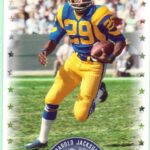Surprises Litter A Week Of Great Tennis At Indian Wells
Thrills and spills, big wins and surprise losses, seeds falling and new faces shining. Indian Wells has lived up to its billing as one of the biggest and best tennis events in the tennis calendar.
The venue is stunning, the crowds are huge, and the tournament began with a near-full complement of players—give or take the Williams sisters’ usual boycott and Juan Martin Del Potro’s injury.
It even attracted the very best of both current and past players in the tastiest exhibition night in living memory. As if Andre Agassi and Rafael Nadal facing Pete Sampras and Roger Federer wasn’t enough, the Hit for Haiti scheduled Steffi Graf and Lindsay Davenport against Martina Navratilova and Justine Henin. Tennis courts don’t come more laden with star quality.
Even the Indian Wells draw looked set to deliver up everyone’s favorite matches during the last few days.
There was the tantalising prospect of Nikolay Davydenko outhitting Nadal for the fourth consecutive time in as many months.
There was a chance that Andy Murray could seek revenge over Federer for his Australian Open defeat.
Best of all, there was the prospect—should the cards fall right—of two mouth-watering finals: Nadal against Federer and Kim Clijsters again Henin.
However, while some of the anticipated fireworks turned into damp squibs, there were also bangers and sparklers aplenty to keep everyone on the edges of their seats.
Seeds fall on stony ground
The big name exits began almost at once. Women’s top seed Svetlana Kuznetsova fell in her first match, along with Ana Ivanovic, Daniela Hantuchova, Alona Bondarenko, Li Na, and more. Most shocking of all, Henin fell in straight sets even before she joined Navratilova for the Friday night H4H show-stopper.
And it wasn’t just the women’s seeds who fell early.
The first big shock in the men’s draw was Marin Cilic’s loss, at the first hurdle, in straight sets.
Then, in the blink of an eye, the men’s event lost David Ferrer, Gilles Simon, Gael Monfils, Radek Stepanek, Ivo Karlovic, Igor Andreev, Julien Benneteau and Janko Tipsarevic, all in their first matches.
Move forward one round, and another string of some of the most popular seeds was dismissed. Fernando Verdasco failed to impose his big frame and big game beyond one match. Clijsters battled to a final set tie-breaker in her second match before she also succumbed. Juan Carlos Ferrero’s long hot streak was also brought to an abrupt end in his second match. It was the same story for Maria Sharapova.
Finally, the tournament that had begun almost devoid of injuries saw the hoped-for Nadal-Davydenko quarterfinal snuffed out when the Russian withdrew with stress fractures in the wrist. No wonder he announced, through a beaming smile, that his wrist was painful on his backhand in his opening match!
Old faces, old flames
Despite so many favorites fizzling out early, there was some respite from the chill. What better way to warm the cockles of the heart than to welcome back some old flames, and the men’s draw did just that.
No fewer than three former top-10 players won their opening matches after almost a year’s absence with injury.
First was wild card entrant David Nalbandian, who had hip surgery last May and slumped to a lowly 139 in the rankings. This was only his second tournament of the year, and he retired injured from the first.
He fell in round two to world No. 22 Jurgen Melzer. But despite his fleeting visit, Nalbandian looked reassuringly trim, quick and eager. His magician-like shot-making has been sorely missed. May his return be long and healthy!
Another wild card entry was former No. 1 Carlos Moya. He too has been away with major hip problems, and has fallen even further—to 639.
Moya’s first round win in Indian Wells was only his second win since February 2009, and was a tight, tough battle of two tie-breakers. But then once again, the tour’s “other” Mallorcan had to pull out, this time with a foot injury.
Moya is now 33, and must be on borrowed time. Catch him while—if—you can.
The last of the trio—and the most hard-hit of all—was the rangy, still youthful Mario Ancic.
He reached world No. 7 almost four years back with a string of five ATP finals, including two titles. Then he fell victim to that athlete’s curse, glandular fever, and has barely managed a full season since.
Ancic’s last tournament was in May 2009, and this year he has played only Futures and Challenger events. So the No. 694 in the world must have revelled in his two wins at Indian Wells, first against Bobby Reynolds and then against the seeded Benneteau.
In both, a very sprightly Ancic came back from a first set deficit. His serve still shone, his vast arm-swing powered through huge ground shots, with that signature pause of the arm still in place. It was his misfortune, then, to meet Nadal. But there must be some hope that Super-Mario will be able to put his career as a lawyer on hold for little while longer.
The Rafa-Baggy Story
Every tournament has its sartorial talking point. At Wimbledon it’s usually Federer who sets the pace with his now-familiar white “statement” piece. At the Australian Open, it was Venus Williams with her flesh colored shorts and panelling that caused a quick double-take.
Nadal has never been one to hide his light under a bushel in the fashion stakes. He broke away from the established parameters with his swashbuckling vest-and-pirate-pants look. Then he used his new status as world No. 1 to morph into “serious” kit: sleeved tees, knee-skimming shorts, and hot Spanish colors used in just the right quantity.
Perhaps he saw the third phase of his career—post-injury, retooled game, revitalised spirit—as the cue to make a new statement. Perhaps he just had a rush of blood to the head. But Rafa’s shorts became the talking point of the championships.
Their murky shade of brown is criss-crossed with broad bands of beige. The trellis pattern neither matches up at the seams nor with the patch pocket at the back. The shorts are voluminous at the knees and ill-fitting around the haunches. And they are as alien from his crisp white shirt and cerise bandanna as they could be. In a word, dreadful.
Asked about them, rather cheekily, by the Sky anchorman, Nadal burst into giggles. In his broken English he admitted, in essence, that they looked OK in the picture but not so good in reality. He would be changing them for the next tournament.
Perhaps he should consult Shakira about his Miami threads. She seems to have a good eye for such things.
The Roger-Baggy Story
Six matches played, six wins for Federer. But as soon as the draw for Indian Wells was out, his meeting with Marcos Baghdatis in the third round jumped off the page. For Baghdatis has the type of skills to upset the rhythm of the very best. And he has, of late, started to regain some of his best form after a succession of injuries.
As long ago as 2004, when still just 19, the Cypriot had taken a set off a Federer on his way to a first US Open title. Baghdatis repeated the trick 18 months later in the final of the Australian Open.
This week, Federer came into Indian Wells with no matchplay since his win in Melbourne. So quite rightly, Baghdatis fancied his chances, and would have fancied them even more after seeing Federer’s inconsistent and tetchy performance against Victor Hanescu.
It proved to be a see-saw match, apparently going Federer’s way when he won the first set and held match points in the second. But Baghdatis clawed his way back. Again Federer seemed to have everything under control with a 4-1 lead in the third set, and a match point at 6-5. Again, he acquiesced with impatient errors. Indeed he racked up a total of 46 unforced errors.
What proved to be seventh time lucky for Baghdatis marked the first time since Rome 2006 that Federer had failed to seal a win after holding a match point.
Significant? Federer thought not. He plans to get in plenty of practice before Miami. He might also consider reverting to the patient, clinical, tactical game that won him the Australian Open. Attacking play is one thing: impatient play is its less productive doppelganger.
The man with the sunshine smile fell in the next round—A match with Federer seems to have that effect on a player— but his win over the world No. 1 for the first time could inspire him to his best world ranking in over two years.
The cream that has risen to the top
The best men left standing may have had their paths cleared of a few troublesome seeds, but they have also shown the quality to get to the final stages of this Masters event regardless of who stood in their way.
Robin Soderling stands at a lifetime high of No. 7, and has already won a 500 event this year. This week, he has sailed through each round with his own brand of easy power, not dropping a set.
His quarterfinal meeting with Andy Murray promised to be the tennis equivalent of an irresistible force meeting an immovable object, but Soderling dominated the No. 4 from the start, to beat his third seed of the tournament. Never has the Swede looked more quick and more powerful. And if confidence is any measure, Soderling has a great chance of overpowering the biggest server of them all, Andy Roddick, to claim a place in his first Masters final.
While “serene” seems to describe the demeanor of Soderling at Indian Wells, “business-like” suits the Roddick body-language rather better.
He has dropped serve just once in 42 games on his way to his fourth Indian Wells semifinals.
Roddick has also reached the quarter-finals in all five of his tournaments this season. He now has an 18-3 season record, equal top with Cilic.
Will he be denied his first Master’s title since 2006? Soderling will have a good try at doing just that.
The impediment to all of them, of course, is a resurgent Nadal, the only former Indian Wells champion left in the draw. Even on the women’s side, the last remaining former champion, Vera Zvonareva, fell in the fourth round.
Before the tournament began, Nadal had not played a match since bowing out of the Australian Open with a knee injury. And in truth, he had never quite regained his dominating form since May 2009. So how would he look in Indian Wells?
The answer was immediate. He looked superb. Fit and hungry, fast and fighting, the old heart, the new game. Bigger serve, more volleys, larger whip, and more thoughtful tactics. In short, a Nadal to mess with the minds of his opponents.
Nadal has reached the tournament’s semifinals for the fifth straight year, and since he’s beaten Ivan Ljubicic in all five meetings since 2005, it would be a brave man who’d bet against his achieving it.
Good to have you back, Rafa, whatever the shorts.




















